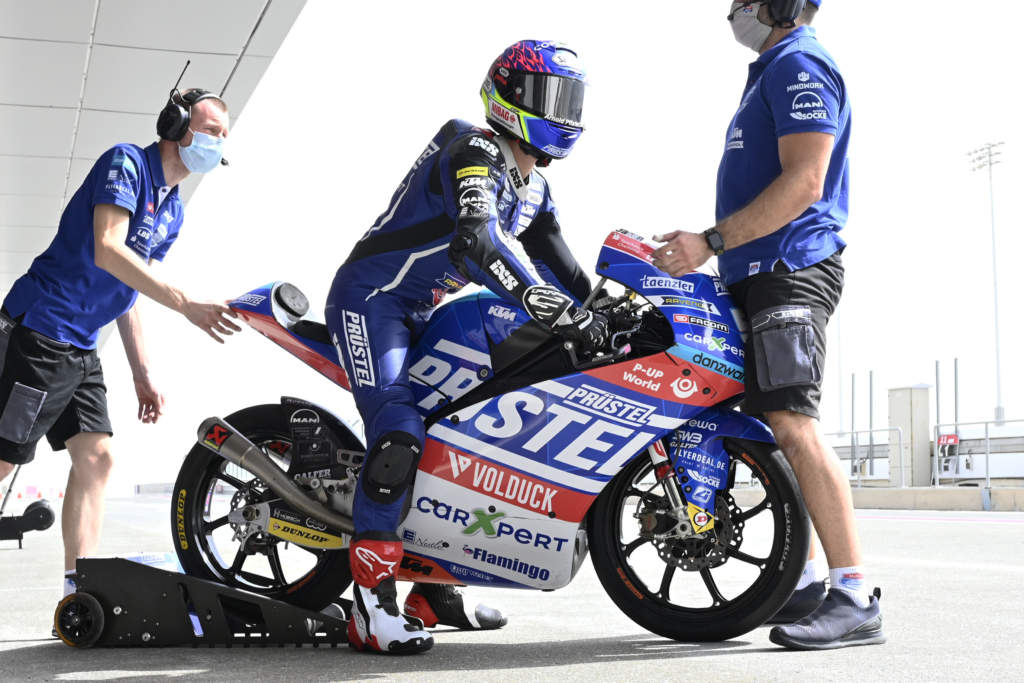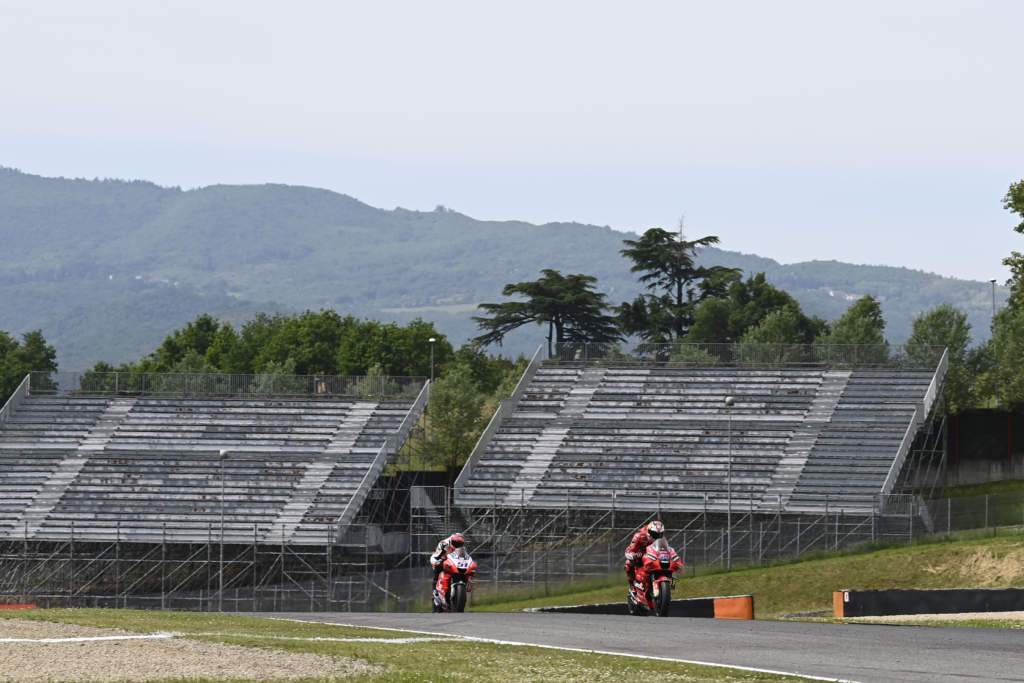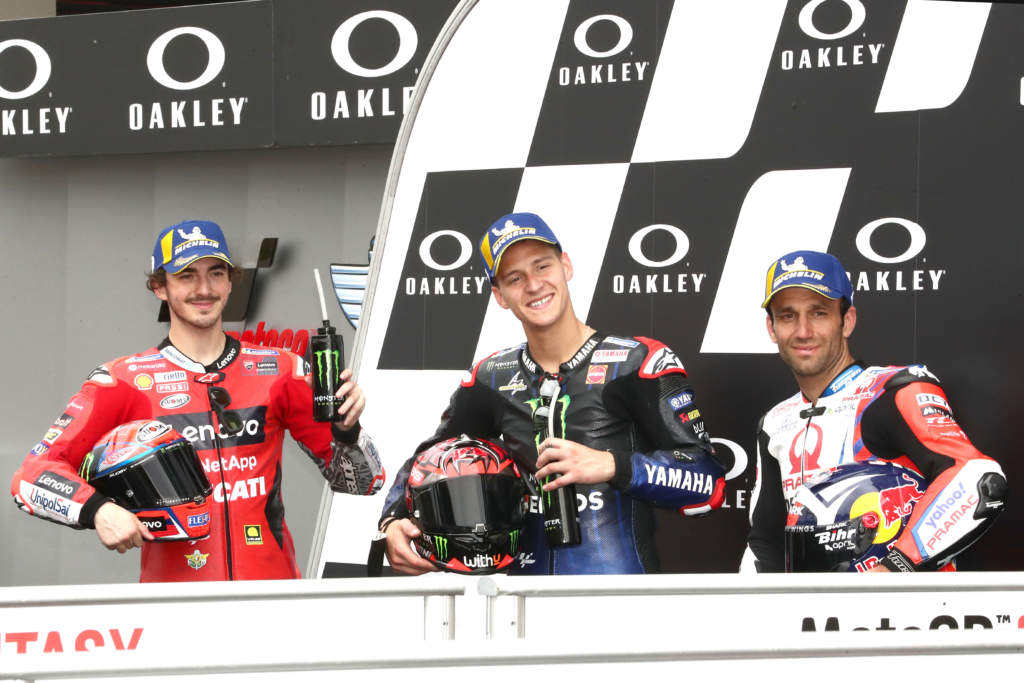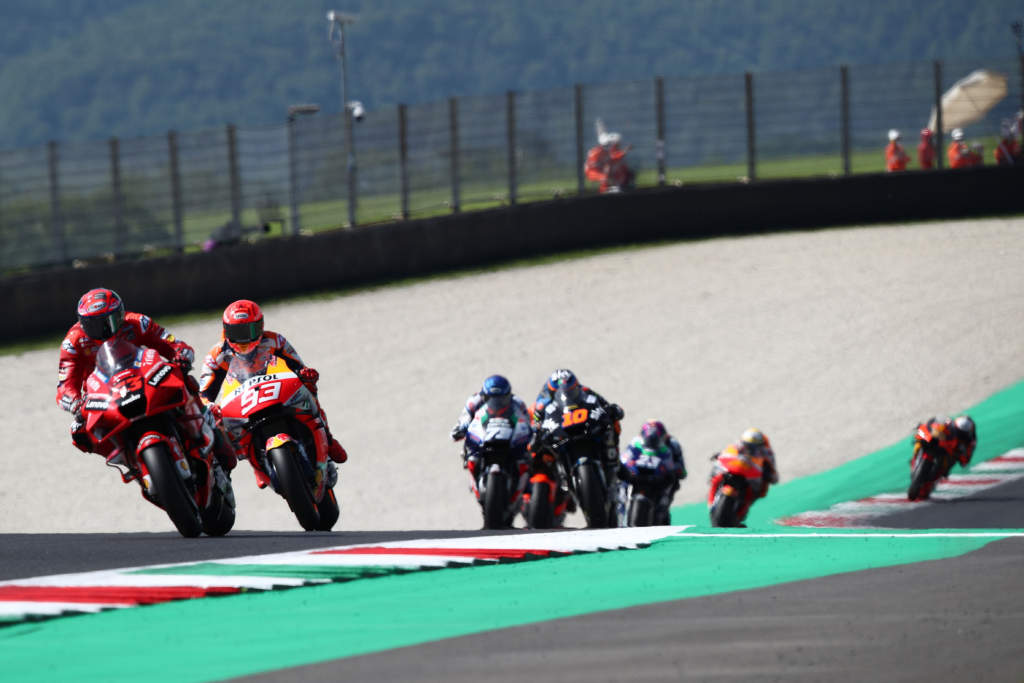Criticism of the way motorsports broadcasters in general, or MotoGP promoter Dorna in particular, cover potentially very serious crashes isn’t anything new. It’s a topic that received well-documented coverage last year in the wake of both F1 driver Romain Grosjean’s fiery crash in Bahrain and the huge accident between Johann Zarco and Franco Morbidelli at the Red Bull Ring.
Yet today’s coverage in the aftermath of a three-bike collision between Jason Dupasquier, Ayumu Sasaki and Jeremy Alcoba felt different, in large part due to the seriousness of the injuries suffered by Dupasquier after he fell and was apparently struck by the other riders during Moto3 qualifying at Mugello.
The Swiss rider remains seriously ill in a Florence hospital, undergoing assessment to determine the full severity of his injuries and the next step in his treatment, according to a brief statement released earlier by the MotoGP chief medical officer.

That didn’t stop the airing of some 45 minutes of on-and-off-again (long-range) shots of the 19-year-old receiving emergency medical care in the middle of the Mugello circuit. Time and time again during the delay, we were shown TV pictures of medical staff, ambulances and medevac helicopters as he was administered lifesaving care.
Sure, it’s hard to determine what exactly the condition of an injured rider is, and medical staff absolutely have a priority towards care and not updating a TV director, but you would think it’s better to err on the side of caution – especially when the pictures clearly show a kid ill enough to require an IV line to be inserted in the middle of a race track.
In fact, by the time he was evacuated out of the circuit and to hospital by helicopter, the Mugello marshals had erected privacy screens at the scene. Those are normally used to protect injured riders from the view of fans – except of course that the only fans intruding on Dupasquier’s privacy weren’t in the empty grandstands but rather the ones being fed the images by TV cameras controlled by the series’ promoter Dorna.

The championship’s TV feed (where track action footage is entirely directed by Dorna regardless of the broadcaster airing the show) also replayed the crash shortly after the incident, before the condition of either Dupasquier or Sasaki could be determined.
When asked by The Race to comment, a Dorna spokesperson said that they “acted according to our on-track incident protocol and have broadcasted images that respected the rider and his family’s privacy.”
Of course, the images weren’t just streamed to millions of homes around the world – they were also aired in the MotoGP paddock, where it’s often difficult to walk a few metres without seeing a screen and where Dupasquier’s team and fellow competitors were able to watch the unfolding events.
“I think in Austria last year we saw a lot of times the crash, and today we only saw it once or twice – but we saw the corner, the helicopter,” pole position man Fabio Quartararo told The Race in the post-qualifying press conference.
“It’s not a nice thing to see when you’re going to be going at 350kph a few minutes later. It’s not easy for us but I guess it’s not easy for the TVs either.
“You have to make a reset when you restart, but today it wasn’t easy and when I went on track I made a mistake straight away. I wasn’t focused at all; it wasn’t easy.”

“The only strategy for me was to ride the bike again,” explained Quartararo’s fellow front-row qualifier Pecco Bagnaia. “To focus on your riding and your bike. It was very difficult, and at the start I wasn’t so concentrated in the first few laps.
“At the start of the session I saw the helicopter coming back into the track, which is the first time I’ve ever seen something like that.
“It’s been a long time since we’ve seen an incident and it wasn’t easy. This is our sport and you have to focus on your riding, but in situations like this it’s always very hard for me to focus on my bike.”
Elsewhere, Aleix Espargaro admitted he felt “not motivated at all” to get on the bike for FP4, and many other riders likewise admitted to a heavy mindset heading into the session.
This is not the first time handling of crash coverage raises question marks. Remember when the footage – not from TV cameras but from race control’s CCTV system – of the tragic crash that took Luis Salom’s life at the Catalunya circuit in 2016 was posted onto MotoGP’s website on the day of the crash?
And sure, part of the motivation to show incidents like this comes not from any attempt at malice, but simply from differing cultural norms. Yet MotoGP, while being largely based out of Spain and Italy, is a global championship, and choosing what to distribute is another example of where it’s better to err on the side of caution rather than causing distress.

We all get that the point of MotoGP is, like all sports, at its base level to entertain. Yet I don’t see how watching a 19-year-old kid fighting for his life is entertainment for anyone. No one is denying that motorbike racing isn’t dangerous – trust me when I say that everyone in the paddock is all too aware of the risks that the riders face in the name of standing on trophies and spraying champagne.
Yet sometimes when they’re suited up, visors closed and knocking chunks off each other at 200kph, it’s quite easy to forget that most of them are only kids.
Riders have been more and more open recently about the mental impact of being under the spotlight and always open to criticism, but there’s still a long way to go – and maybe the best place to start is by not having them watch images of their friends and rivals potentially fighting for their lives?



